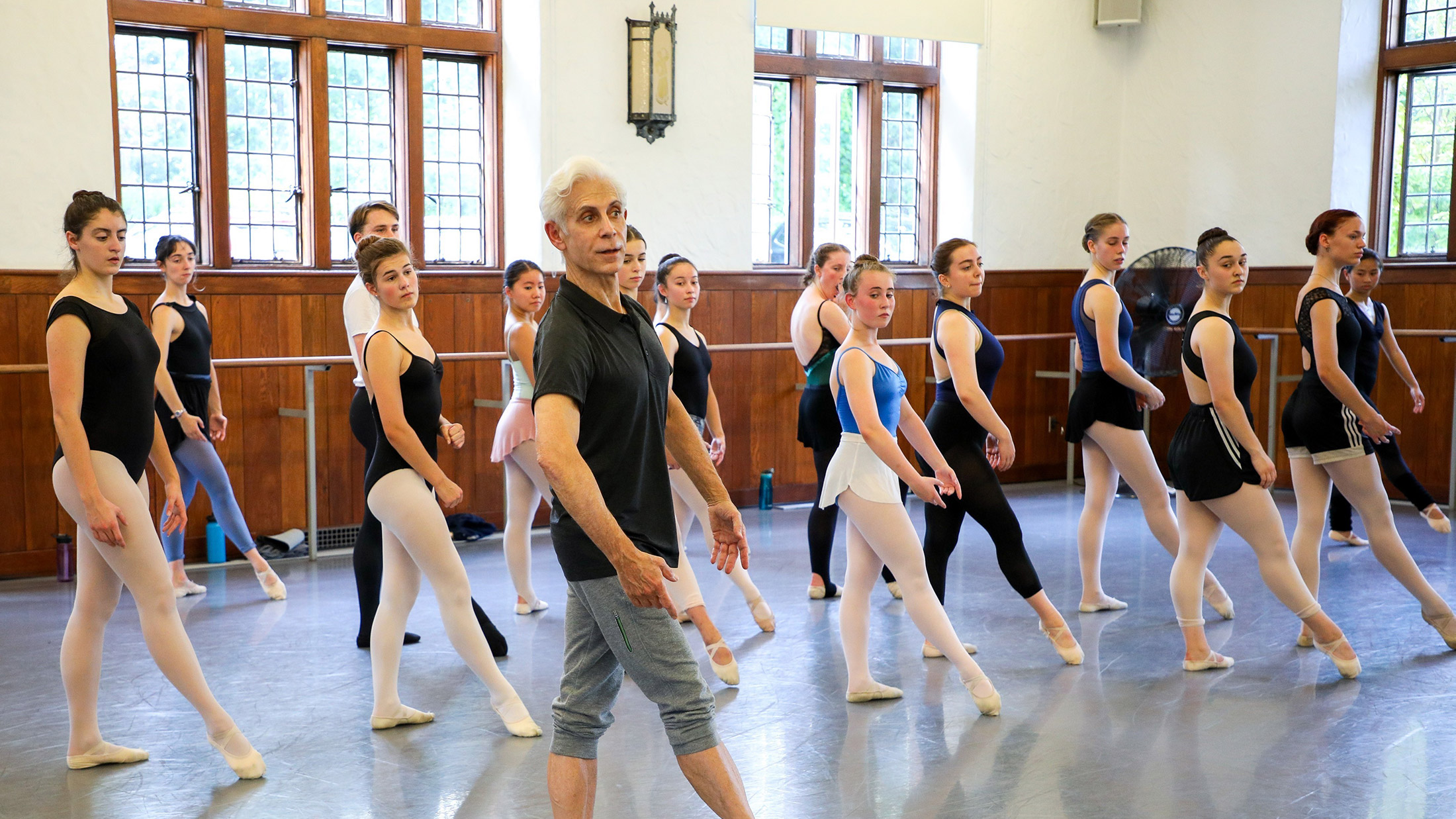Nearly four decades have passed since Steven Caras was thrilling audiences all over the world as a featured dancer in George Balanchine’s New York City Ballet. But the grace and artistry were still evident last month as he led some of Vassar’s best dance students through a series of advanced steps and exercises in a studio in Kenyon Hall.
“Yep, I still love it,” Caras said following the non-stop, 90-minute class.
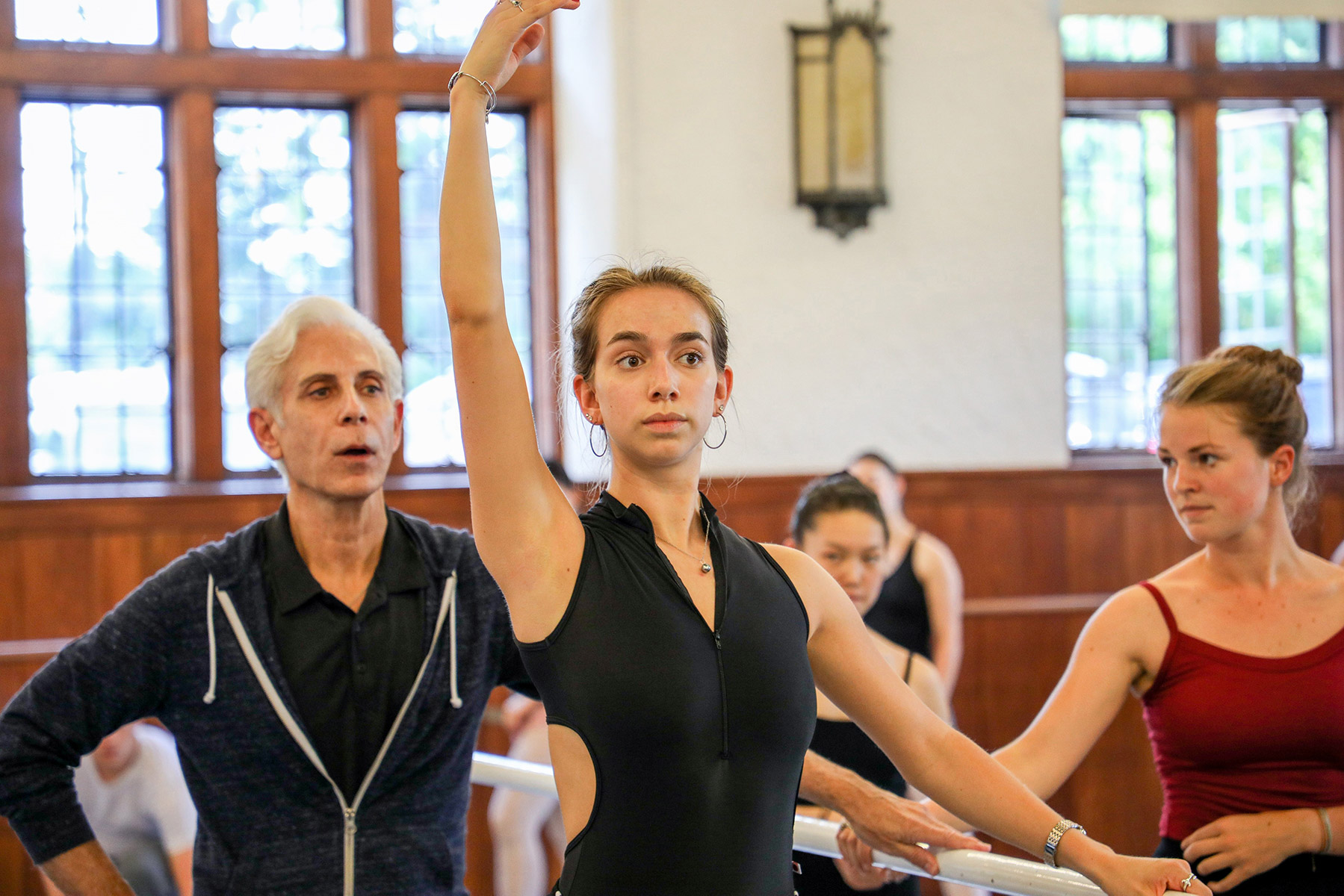
Caras’s passion for his art was on full display throughout the week he spent on the Vassar campus as an artist-in-residence. After teaching the ballet master class, Caras shifted his focus to his second career as one of the nation’s most renowned photographers of dance. An exhibition featuring 50 photographs spanning 40-plus years of dancers from all genres—some in performances, others in candid portraits backstage, as well as formal studio images—opened at Vassar’s Palmer Gallery during his stay on campus. Caras also met with members of Phocus, an organization of student photographers, in combination with several dancers at Kenyon Hall to impart tips on capturing fast-paced dance movements as well as more intimate close-ups.
In a lecture well-attended by students, faculty, and others in and beyond the Vassar community, Caras revealed some difficult experiences of his 1950s childhood, including struggles with his sexual identity and low self-esteem. “There was no LGBTQ community back then to help you define who you were,” Caras said.
It was only after he experienced some inspirational success as a novice dancer in a high school production of Brigadoon, Caras said, that he decided to pursue his dream. “Several weeks after Brigadoon, I was taking two ballet classes a week—it was that quick,” he said, adding, “Bullying was sadly inevitable and beyond question painful, but I wouldn’t let it trip me up.”
Three years later, Balanchine offered Caras a contract with the New York City Ballet. Yet despite this remarkable achievement, the self-doubt remained. “I felt I was in over my head,” he said, “but Balanchine felt otherwise. He nicknamed me ‘the Greek boy’ and often introduced me that way. On my very first day as I stood nervously at his side, Mr. Balanchine addressed the seasoned company members, declaring, ‘This is our new Greek boy. We will make him strong.’”
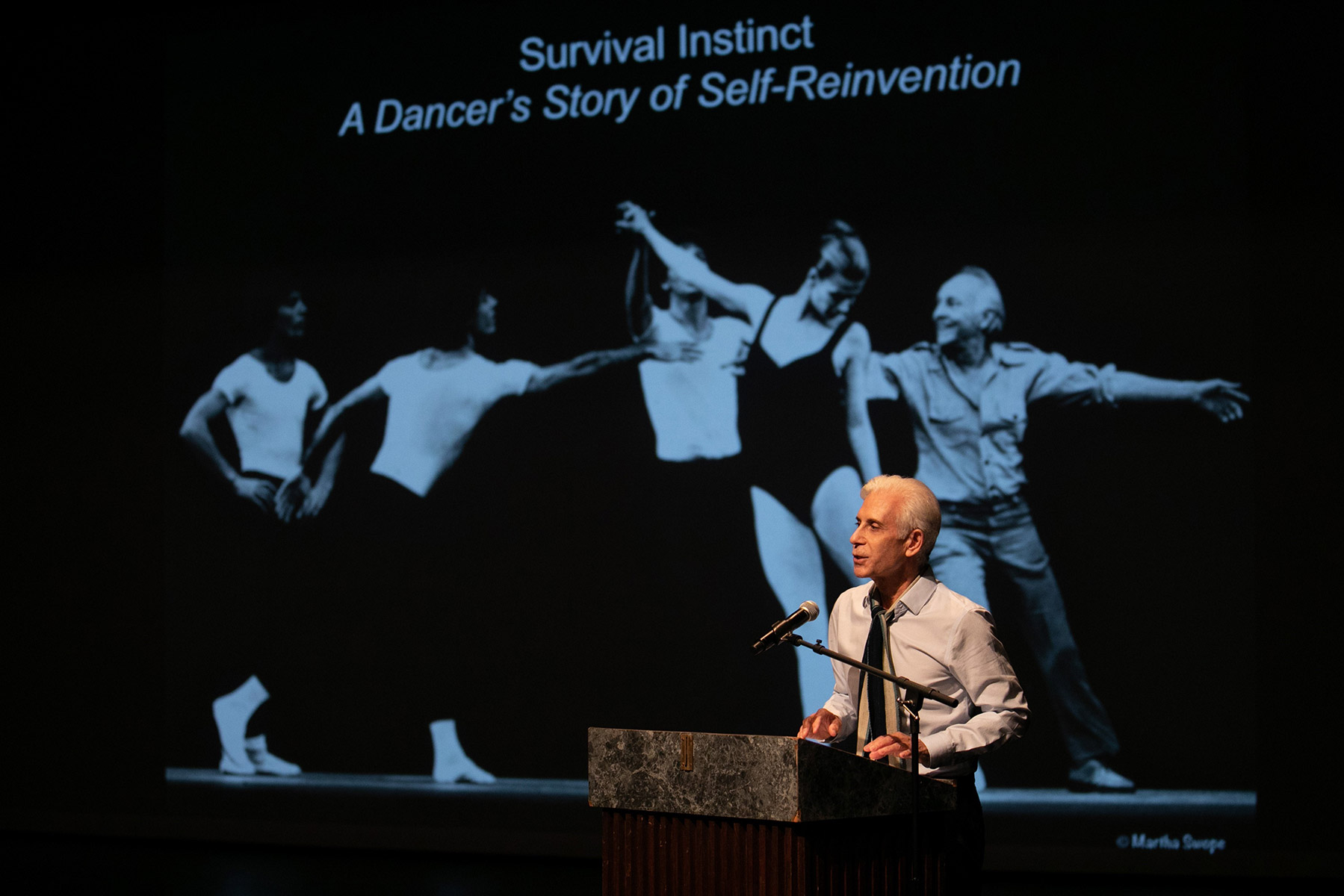
Caras told the Vassar audience, “I gained my sea legs rather quickly. It wasn’t long before I was dancing many roles—at Lincoln Center and around the world.”
As he continued to struggle with his sexual identity, Caras decided to quit the New York City Ballet “to get a grip on my life,” but Balanchine convinced him to take a leave of absence instead. “Mr. B. graciously shared, ‘The door will remain open if you wish to return.’,” Caras said. In fact, he rejoined the troupe just eight months later.
Yet clashes with famed choreographer Jerome Robbins were immediate and enormously challenging, Caras said. While he realized that facing some trials was part of the cost of being an artist, “Robbins was extreme, and to say his treatment didn’t critically erode my confidence would be dishonest,” Caras said. “But his work was excellent—much of it thrilling to perform. And there were those certain days we all welcomed when his darkness didn’t surface. Yet in my experience, those days were rare.” Looking back all these years since, Caras further reflected, “I suppose the only thing worse than working with [Robbins] was not working with him.”
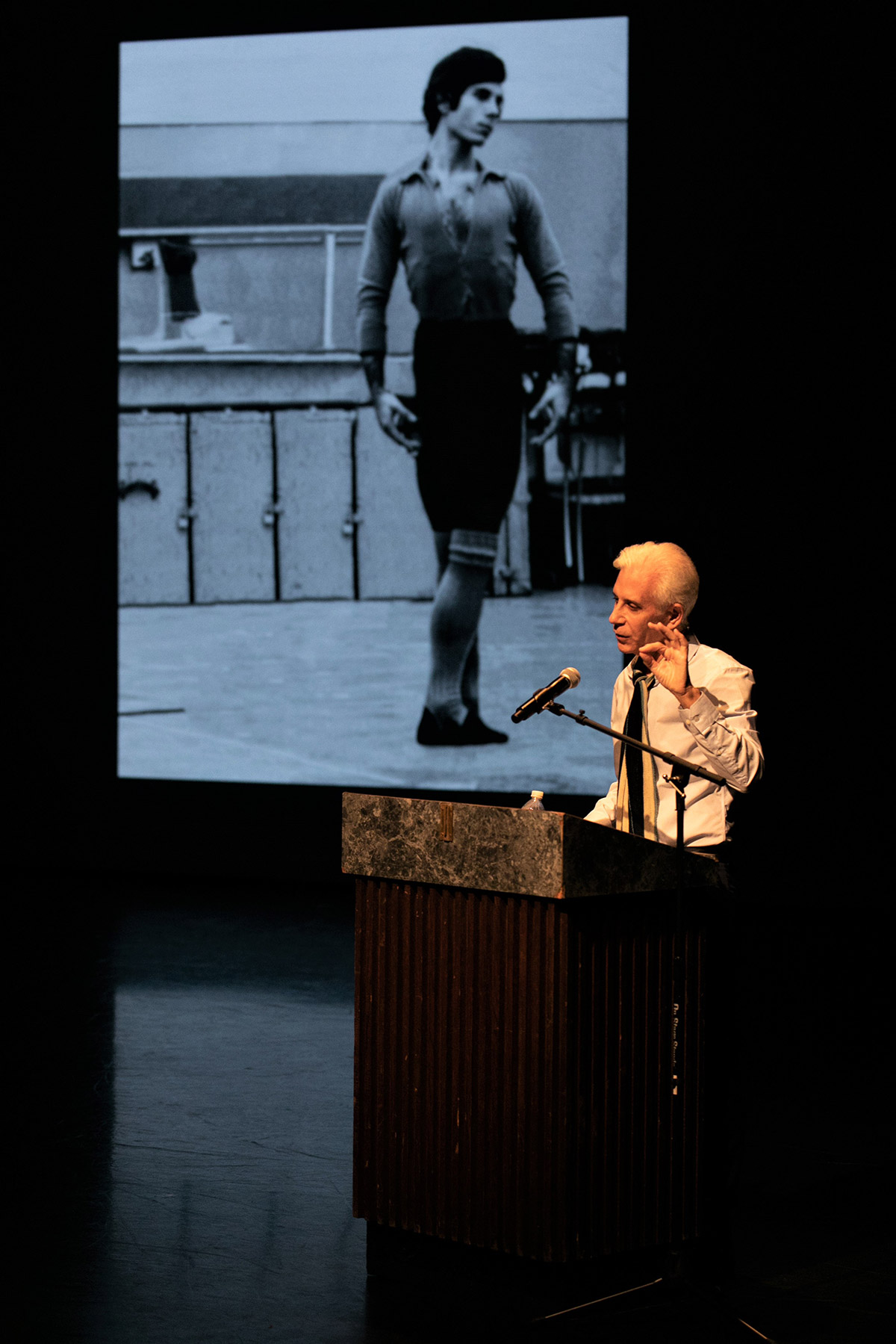
Caras said he began to realize his dancing days wouldn’t last forever when he lost a favorite role to a newcomer. He bought a used Olympus camera for $95 “to have a hobby as a distraction from the inevitable.” When Balanchine noticed him intently reading the instruction manual, he instantly gave Caras exclusive access to shoot whatever he wanted, with the proviso that Caras would show him all of his photographs—not to censor him but to gain insight from Caras’s perspective. “‘I want to see what you see,’ he generously expressed,” recalled Caras.
Caras said he would always treasure the guidance and support he received from the ballet company’s official photographer, Martha Swope, who was also a trained ballet dancer. “A year after I began fidgeting with the instructions to my camera, I shot something for the New York City Ballet since Martha wasn’t available, and that was the beginning of a new career,” Caras acknowledged.
Initially, the transition wasn’t a smooth one. “After 14 years, I was retiring and reality struck,” he said. “No more working on stage interacting with 100 people, no more cheering crowds. It was just me, alone, in a darkroom or a dark corner of the theater, being shushed by the very people who once applauded me.”
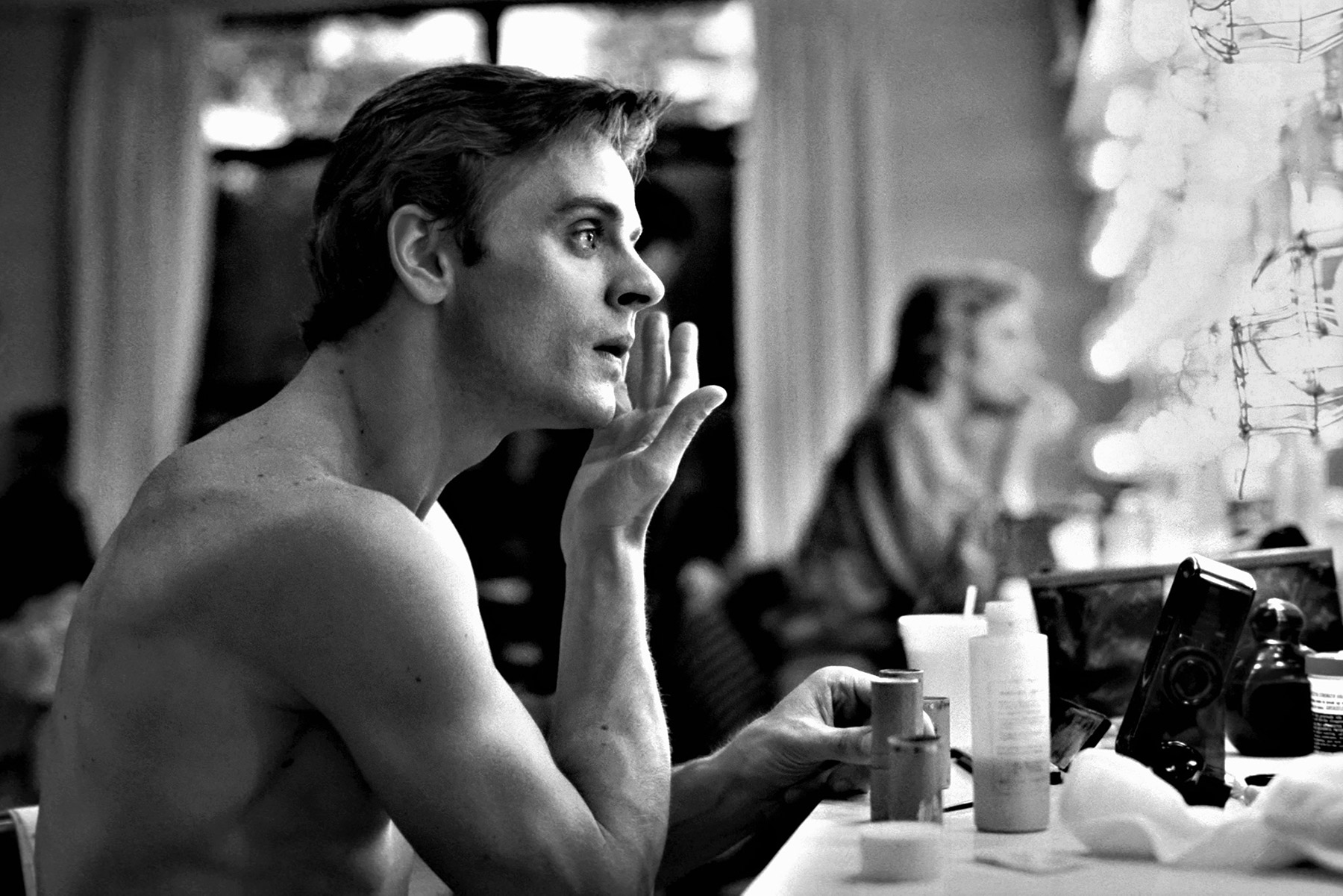
While Caras continues to photograph and guest-teach, his career has taken several other “turns” simultaneously, including ballet master work, director of development positions with several South Florida arts organizations, guest speaking and teaching engagements, and, most recently, becoming the Advocacy and Outreach Coordinator for Rosie’s Theater Kids, a New York City nonprofit arts program for children founded by comedian Rosie O’Donnell.
Caras told his Vassar audience he has been equally insecure at the brink of each and every one of his professional transitions. When referring to fund-raising —the most difficult of all his career moves—he recognized there was “a bigger picture” to consider. “Being one of the messengers in the field on a mission to nourish and support the very art form that gave me a life and a safe, nurturing environment to discover and accept myself,” he said. “I had to give it my all.”
Caras took a hiatus from some of his duties to be featured in a PBS documentary film about his life called Steven Caras: See Them Dance that profiled him as a dancer and photographer. The film won an Emmy in 2012.
Caras said his time at Vassar “was a gift from heaven,” and those who met him agreed. Natalie Junio-Thompson ’23, one of the dancers who took part in Caras’s master class, said spending time in the dance studio with him was an unforgettable experience. “It was inspiring to learn of his accomplishments,” Junio-Thompson said, “and the nuances of his movements were amazing.”
John Meehan, Professor and Chair of Dance on the Frances D. Fergusson Chair and Director of Vassar Repertory Dance Theater, who was instrumental in organizing Caras’s visit, said the Vassar community truly profited from the time he spent on campus. “To have Steven Caras on the Vassar Campus for a week to teach a master class and lecture while his magnificent exhibition of dance photography was showing in the Palmer Gallery was a wonderfully comprehensive look into his amazing career,” Meehan said. “It was an exciting event for dance-lovers, photographers and anyone else interested in creative life choices.”
Caras’s residency was underwritten by the Departments of Dance, Art, and Media Studies, the Dean of Faculty Office, and two alumnae—Margaret Wellington ’69 and Robin Woodard ’69. His photographs will be on display at Vassar’s Palmer Gallery until October 18.
